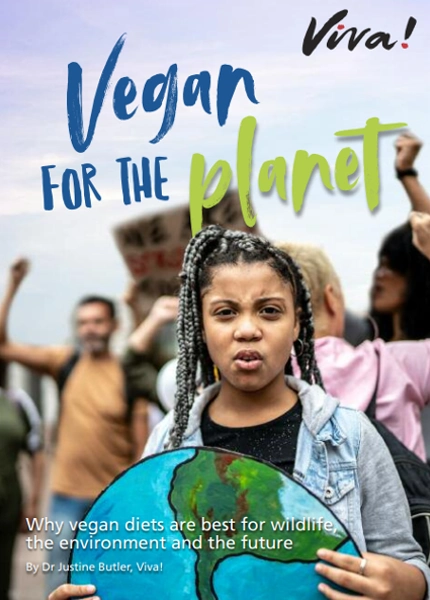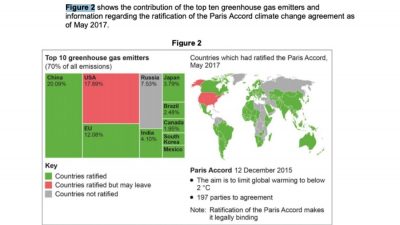
There are so many ways to bring veganism into the geography classroom. Discussions can range from the disproportionate impact of animal agriculture on the global south or the issues of deforestation and soil degradation, right through to the socio-economic impacts of animal products within human geography. The possibilities are endless.
In 2018 the University of Oxford finished the most comprehensive analysis of agriculture that has ever been conducted. The study looked at almost 40,000 farms across the world and at every possible form of agriculture from free-range grass-fed cows to intensive farming of chickens and arable agriculture. It overwhelmingly concluded that going vegan is the ‘single biggest way’ in which individuals can minimise their environmental impact on the planet. There’s no doubt that agriculture is an incredibly important subject for any geographer to learn about!
Here, we look at past papers to consider how you could bring veganism into the classroom to teach your students about the world and prepare them for their exams.
We’ve used the AQA A-level specification as an example to show how many ways you can engage students on veganism, through a geographic lens. Take a look at the key ways in which veganism can be discussed.
| Specification of AQA A-Level Geography | Suggested Ways of Incorporating Veganism |
| 3.1.6.1:
Causes, rates and potential impacts of declining biodiversity. Ecosystems and their importance for human populations in the light of continuing population growth and economic development. |
Case study of Brazil’s economic development at the expense of the Amazon rainforest, i.e. Clearing forest to make way for cattle farming and to grow feed for animal agriculture.
General correlation between increasing GDP per capita and consumption of animal products per capita. How economic development accompanied by an increase in meat-eating directly affects the planet’s ecosystems. |
| 3.1.6.2:
Factors influencing the changing of ecosystems, including climate change and human exploitation of the global environment.
|
Brazil forms an apt case study of how human exploitation of the environment has been inflicted for economic gain, and how animal agriculture relies on environmental destruction as the Amazon is burnt down to make way of cattle ranching and to grow animal feed. |
| 3.1.6.5:
Marine ecosystems. Human activity and its impact: pollution, fishing.
|
Fishing is leading to marine ecosystem collapses across the world and is an excellent example of how the consumption of sealife affects the world. Find out more about the facts to incorporate into your teaching. |
| 3.1.6.6:
Local factors in ecological development and change (such as agriculture, urban change, the planned and unplanned introduction of new species). |
Find out more about all the ways in which animal agriculture inflicts damage on ecosystems. In particular, look into the staggering amount of land used and how animal agriculture affects wildlife. |
| 3.2.1.5.1:
Threats to Antarctica arising from: climate change, fishing and whaling
|
The specification particularly notes fishing and whaling as threats to Antarctica, affording the perfect opportunity to bring veganism into the classroom. Find out more about fishing and how it impacts both marine ecosystems, and the world as a whole. |
| 3.2.4.2:
Environment and population. Climate change as it affects agriculture. Characteristics and distribution of two key zonal soils to exemplify relationship between soils and human activities especially agriculture. Strategies to ensure food security.
|
Soil degradation is rarely discussed despite the UN’s warning that we may only have 60 years left of healthy soil! Animal agriculture is at the heart of this deadly threat.
Find out more about how soils are affected by human activity, including a case study of the Sahel for the classroom. Discuss strategies for food security; one solution is veganism, which minimises land and water use and promotes efficient use of resources, thereby improving food security. Discuss how such a radical overhaul could be achieved and its consequences. |
In all of the above ways, animal agriculture plays a huge role in the creation of the current climate crisis. You can find a wealth of information which looks at studies on desertification, overfishing, food waste and insecurity, and much more, which can be incorporated into your teaching.
If you would like to order copies of Envirocidal to use in your classrooms please get in touch.
Let’s take a look at some A-level past paper questions from 2018; some of them explicitly reference animal agriculture, whereas others are more general; enabling students to introduce creative and topical ideas that are sure to stand out to the examiners.
Paper 1, AQA, A-level, Physical Geography, 2018
Paper 1, AQA, GCSE, 2018
Paper 2, AQA, GCSE, 2018
Vegan for the Planet

Animal agriculture lies at the heart of all the environmental problems we are facing, from global heating, deforestation, the destruction of ocean ecosystems, to air and water pollution and wildlife loss. One million species around the world are at risk of extinction. Urgent and drastic action is required now if we are to avert disaster.
This guide explains why animal agriculture is so damaging and how changing the way you eat is the single most effective action you can take as an individual to lower your impact on the planet.
Action is long overdue, but you can empower yourself through the food choices you make. This is a vital part of the solution for confronting the biggest threat humanity has ever faced. You can make a difference right now by going vegan – for the future of all life on Earth! Your dietary choices can either be part of the problem or part of the solution in addressing the climate crisis.

